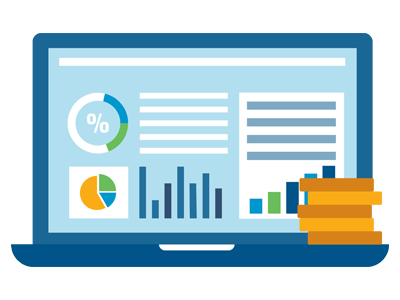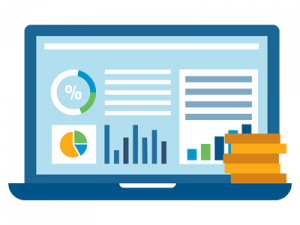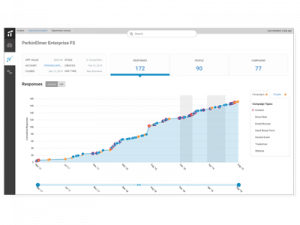The Actionable Guide to Account-Based Sales Productivity
Terminus and ABM offers more channels, more data, and more opportunities to increase sales productivity and win more deals. Learn more by requesting a demo or reading this ebook.


The #1 ABM Platformfor Sales Productivity & Efficiency
Give your sales team the air cover and data they need to progress and win more deals. Learn more about Terminus by checking out the “Terminus for Sales Teams” overview.

Why Sales Teams Love an ABM Strategy
LEARN WHY HERE
How Sales Teams Today Use Terminus
A SALES GUIDE TO TERMINUS
Strategic Account-Based Deal Coaching for Sales Leaders & Sellers
GET THE WORKSHEETSales Productivity
Like many corporate terms, the phrase “sales productivity” is a fairly vague one. Just what is sales productivity? It depends on who you ask. Some use it as a synonym for sales efficiency or sales effectiveness, especially in everyday business conversation. Others define each term differently.
One who treats it differently, Jason Jordan of Salesforce, gives the sales productivity meaning as the product of sales efficiency and effectiveness, rather than as an equal thing. He says that, at its most basic form, the sales productivity definition is “the output of your sales team.” Going further, he gives a sales productivity formula: “Productivity equals Efficiency multiplied by Effectiveness.”
As with almost everything else concerning business operations, it is important to devise ways to measure this type of productivity. This involves setting sales productivity benchmarks that are easy to measure and keep track of. Once this is done, you’ll be able to collect sales productivity statistics over time, and this data can let you know when your team is doing better or worse than average.
It is important to remember that every business is different. Therefore, you might need to use different sales productivity benchmarks than others. You may also find that statistics that seem great to one company are actually poor in yours. Always keep your own company’s sales cycles in mind to ensure that your expectations are realistic for your own business.
Many sales software platforms make it easy to learn about and implement productivity benchmarks and related concepts. They’ll teach you how to calculate sales productivity in Excel, give you ideas for how to measure sales productivity, and more. Since the definitions can vary across sources and platforms, many will be sure to answer the question of “what is sales productivity” in terms of how their specific platform defines it, as well.
Sales Efficiency
Sales efficiency has some traits that overlap with sales productivity, but they are not the same. Efficiency refers to how well your team does at being efficient with sales-related activities like prospecting, emailing, and calling potential customers. The more efficient a salesperson is, the more prospects they can connect with. This, in turn, determines how many meetings they can set up for further sales activity.
How to measure sales efficiency is a question that isn’t too hard to answer, given that the metrics involved are easy to track. You can focus on how many calls per day a salesperson makes, how many legitimate emails are answered, and other easily-quantifiable sales prospecting statistics.
It is important to remember that the sales efficiency formula puts it as part of a larger equation. Without all of the elements in place, it does not directly translate into sales. There is still a difference between sales efficiency vs effectiveness, so one must not be expected to substitute for the other. Instead, all of the aspects need to work together to improve success.
One of the best ways to improve sales efficiency is to use tools like the Terminus platform. These tools allow you to keep track of all of the metrics your company has found to be relevant to this goal. Which metrics those are can vary between companies, as can which benchmarks qualify as doing good or needing help. Sales platforms also help you determine which accounts should get more attention, and this also improves efficiency. By spending more time on the more likely prospects and less on those that are unlikely to convert, your team will avoid wasted hours while not entirely giving up on the “less likely” prospects.
Sales Tools
A plethora of sales tools awaits those who wish to improve their efficiency and productivity. These do everything from help with communication to keep track of various sales statistics. Many teams use a suite of tools to cover all of their needs.
Sales tools are generally divided into categories depending on what they do. There are some for management, productivity, execution, organization, communication, and more. Some of these are standalone tools and always have been, while others started out as single-focus software and then expanded in response to their customers’ comments.
A few, such as Terminus, are platforms that were built from the ground up to be multifunctional. Sales productivity tools of this type include multiple capabilities, and the various aspects work better together since they were built with that in mind from the start. Platforms also offer plenty of increase sales productivity tips and other educational materials.
If you ask which are the best sales tools, you’ll get passionate arguments for many different brands and types. This is because people and companies are all different, and what seems perfect to one might not meet the needs of others. Along with this factor, you should also remember that some tools are aimed at specific types of sales activity. There are marketing tools for sales reps, sales training tools, tools for inbound marketing, and more. The best in each category may be different from, say, the best tools for outside sales.
Because of this, it’s best to sign up for test runs of sales tools for B2B before committing to one. This will help ensure that the ones you are considering are actually best for you and your sales activities.
Sales Management Tools
Managing a sales team or department is more involved than simply working on one, so if you’re in charge, you need tools that are made with your role in mind. Sales management tools allow you easy access to things like personal selling statistics for your staff members, sales training statistics, and other hard data.
Having this information at hand is crucial for your effectiveness as a manager. Such data lets you know who needs help to increase sales productivity, brings ways to improve sales performance to the fore, and much more. In order to keep your department or team heading in the right direction, you must pay close attention to these reports, statistics, and overall trends. You must also watch to ensure that everyone is meeting benchmarks.
The best sales management tools also offer help in other ways. They provide information ranging from general tips on how to make a sales team more productive to how to help a lagging team member. This information comes in the form of a how to improve sales productivity PPT or an improving sales productivity PPT, specific ways to improve sales performance, and even tips on how to measure sales growth.
With all of this data and supporting information at hand, you’ll find it much easier to improve your team’s success, and along with it, your own. Makers of sales management tools want you to succeed, so be sure to use all of their supporting information.
Sales Metrics KPI
As you learn how to measure sales performance, you’ll run into the question of just what to measure. What should the metrics, or key performance indicators (KPI) be for your team?
For most B2B sales teams, it’s a good bet to start with sales metrics KPI like new deals won, revenue won, length of sales cycle, and close rate. It is also a good idea to look at sales statistics 2018 and sales statistics 2019 so that you can compare them and spot trends. From this information, you can better predict what to expect in 2020 and beyond.
It is also important to keep unexpected events in mind when deciding on benchmarks to try to meet. Sometimes, something like COVID-19 will arrive that blows all of the previous expectations out of the water, at least temporarily. By looking at sales effectiveness metrics from before the event, you can better determine whether your team had been on track or not. Then, you improve your chances of a quick return to normal once the event finally passes.
If you are just starting with your tracking of sales metrics KPI, you might need some help to get going. Terminus offers sales metrics template, tutorials on how to measure sales performance, and even a sales metrics definition for you to start with. This will make it easy to get your B2B sales metrics tracking efforts going and to work out appropriate benchmarks that progress from there.
Sales Productivity Metrics
As you have seen, there are many factors that can serve as sales productivity metrics. Along with obvious things like the number of sales closed, you should pay attention to those that have to do with sales efficiency. Activity like calls, emails, other conversations, meetings run, and similar things can all be tracked and measured.
It is important to remember that it takes more to be a successful salesperson than simply making more calls or answering more emails than anyone else. Track the conversion ratio of these contacts to ensure that you or your team are meeting the desired success rate for their level of contact. Work with any who are making a lot of contacts without bringing in a lot of sales to go with them. Use the data in your CRM to analyze each step of the Salesforce sale timeline.
One of the best tools for this is Salesforce. Salesforce sales engagement tracking is just the start of the sales productivity Salesforce tool. You can also track any other metric you find necessary, and the Sales Force productivity formula will give you great pointers on what to measure.
When people ask which are the sales productivity tools in Salesforce, the answer is that there are too many to list here. Check out their site to see details on things like the Salesforce capability map, Salesforce sales engagement tracking, sales automation Salesforce, Salesforce sales performance management capabilities, Salesforce sales tracking, and more.
Once you see the details of the tools offered in the Salesforce sales cloud, you’ll see why this platform is a standard name in B2B sales departments. Sign up for a trial today to get the fullest possible look at what the Salesforce sales tool can do for you and your team.



